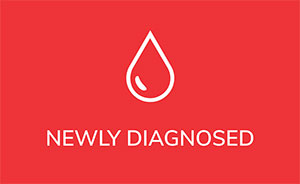Medically reviewed by Dr. Brian Koffman
The Bottom Line:
Worries about worsening disease or dying persist for many patients with CLL years after their diagnosis, while social and family support decreases. Patient support groups could help fill this gap in social support and help patients cope with worries about their disease.
Who Performed the Research and Where Was it Presented:
Dr. Amber Koehler from Mayo Clinic and colleagues presented the results at the American Society for Hematology (ASH) Annual Meeting in 2023.
Background:
Patient reported outcomes are information about a patient’s health that is reported directly by the patient. This can include things like satisfaction with care, or how their disease or treatment affects their physical, mental, or emotional well-being. These are different from outcomes that are reported by someone else like a doctor or nurse. Patient-reported outcomes can be used to assess patient experience and quality of life. This is important for assessing how diseases like chronic lymphocytic leukemia (CLL) and treatments affect patients in different aspects of their lives.
Methods and Participants:
This was a prospective observational study, where newly diagnosed CLL patients were enrolled and then followed for up to nine years. Patient reported outcomes were assessed using the Functional Assessment of Cancer Therapy-General scale (FACT-G), which includes measures of physical well-being, social / family well-being, emotional well-being, and functional well-being.
Results:
- This study covered a time period from 2002 to May 2020, so it was mostly conducted before the COVID pandemic. It also covers periods before and after the advent of targeted therapies.
- In total, 978 patients were included in the study. Of these 610 patients were initially managed with watch and wait a.k.a. active surveillance.
- At the time of diagnosis, patients with CLL had better overall quality of life, but lower emotional well-being compared with the general population.
- About 5 to 6 years after diagnosis, 75% of patients were still worried about their disease getting worse, and 50% were worried about dying.
- Most patients felt nervous at the time of diagnosis, about half of patients reported still feeling nervous 5 to 6 years after their diagnosis.
- Social / family well-being continually decreased the further out from diagnosis patients got.
- Patients reported ongoing decreases in support from their family and friends the further out they got from diagnosis.
Conclusions:
These findings show that “watch and worry” is an apt description for many patients who undergo watch and wait / active surveillance after diagnosis. Worries about worsening disease or dying persist for many patients with CLL years after their diagnosis, while social and family support decreases. Patients support groups could be helpful for filling this gap in social support and help patients cope with worries about their disease. The CLL Society offers approximately 40 CLL-specific support groups across the US and Canada as well as a Peer Support Program. You don’t have to do it alone!
Links and Resources:
Watch the interview on the abstract here:
You can read the actual ASH abstract here: Longitudinal Analysis of Patient Reported Quality of Life in Newly Diagnosed Chronic Lymphocytic Leukemia Stratified By Initial Management Strategy: A Multi-Institutional Prospective Cohort Study
Take care of yourself first.
Ann Liu, PhD

















